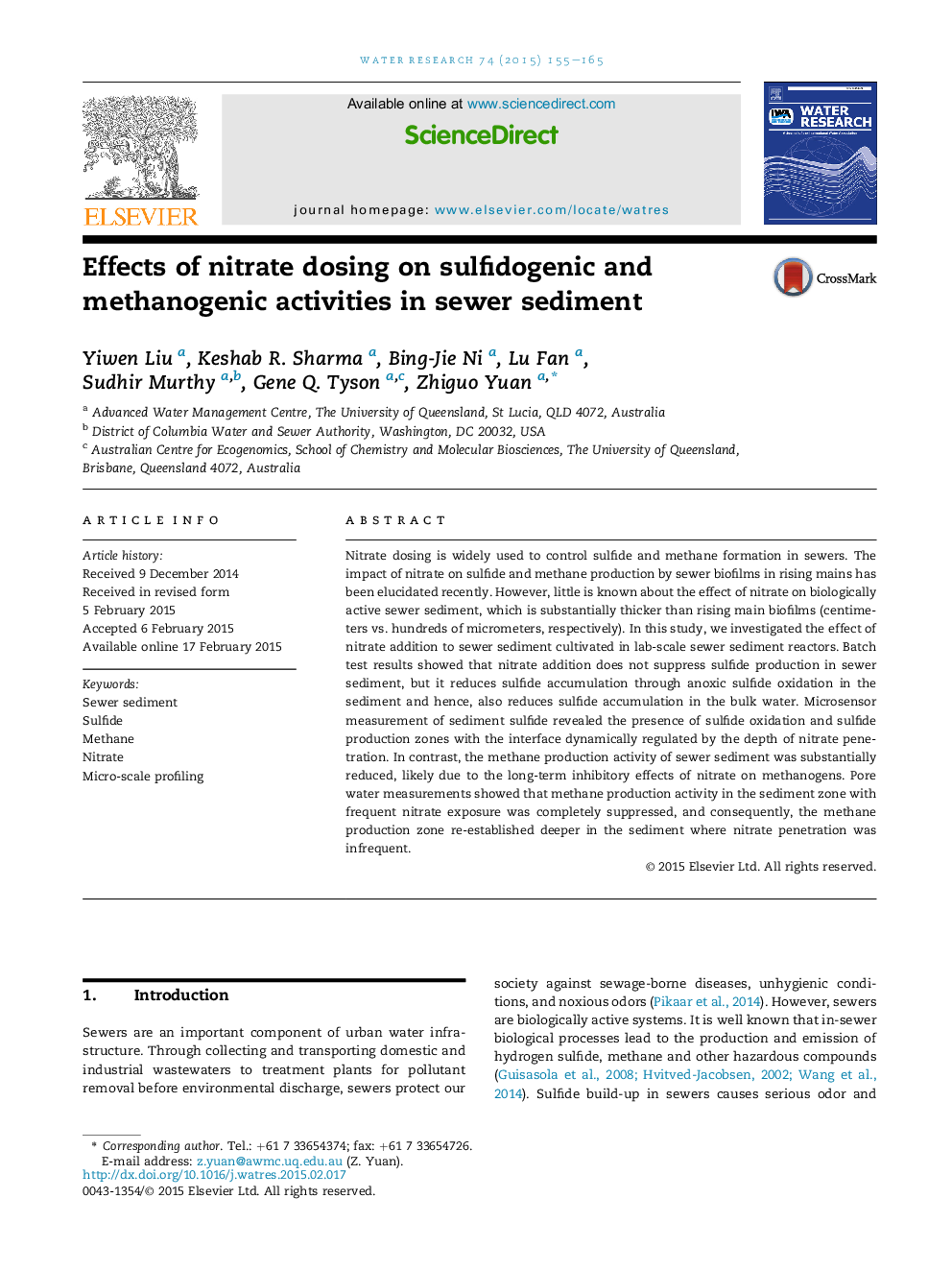| کد مقاله | کد نشریه | سال انتشار | مقاله انگلیسی | نسخه تمام متن |
|---|---|---|---|---|
| 4481273 | 1623094 | 2015 | 11 صفحه PDF | دانلود رایگان |
• Nitrate addition reduces sulfide and methane accumulation in sewer sediment.
• Nitrate addition does not suppress sulfide production in sewer sediment.
• Anoxic sulfide oxidation occurring near sediment surface is responsible for sulfide control.
• Nitrate addition substantially reduces methane production in sewer sediment.
• Methane production is completely suppressed in the zone with regular exposure to nitrate.
Nitrate dosing is widely used to control sulfide and methane formation in sewers. The impact of nitrate on sulfide and methane production by sewer biofilms in rising mains has been elucidated recently. However, little is known about the effect of nitrate on biologically active sewer sediment, which is substantially thicker than rising main biofilms (centimeters vs. hundreds of micrometers, respectively). In this study, we investigated the effect of nitrate addition to sewer sediment cultivated in lab-scale sewer sediment reactors. Batch test results showed that nitrate addition does not suppress sulfide production in sewer sediment, but it reduces sulfide accumulation through anoxic sulfide oxidation in the sediment and hence, also reduces sulfide accumulation in the bulk water. Microsensor measurement of sediment sulfide revealed the presence of sulfide oxidation and sulfide production zones with the interface dynamically regulated by the depth of nitrate penetration. In contrast, the methane production activity of sewer sediment was substantially reduced, likely due to the long-term inhibitory effects of nitrate on methanogens. Pore water measurements showed that methane production activity in the sediment zone with frequent nitrate exposure was completely suppressed, and consequently, the methane production zone re-established deeper in the sediment where nitrate penetration was infrequent.
Figure optionsDownload high-quality image (223 K)Download as PowerPoint slide
Journal: Water Research - Volume 74, 1 May 2015, Pages 155–165
